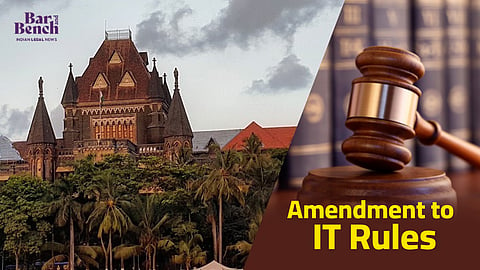
- News
- Columns
- Interviews
- Law Firms
- Apprentice Lawyer
- Legal Jobs
- हिंदी
- ಕನ್ನಡ

The Bombay High Court’s Justice AS Chandurkar on September 20 struck down Rule 3 of the Information Technology (Intermediary Guidelines and Digital Media Ethics Code) Amendment Rules, 2023 (IT Rules Amendment), which empowered the Central government to establish Fact Check Units (FCUs) to regulate 'fake news' about its business finding it be violative of fundamental rights [[Kunal Kamra v. Union of India and Ors and other petitions].